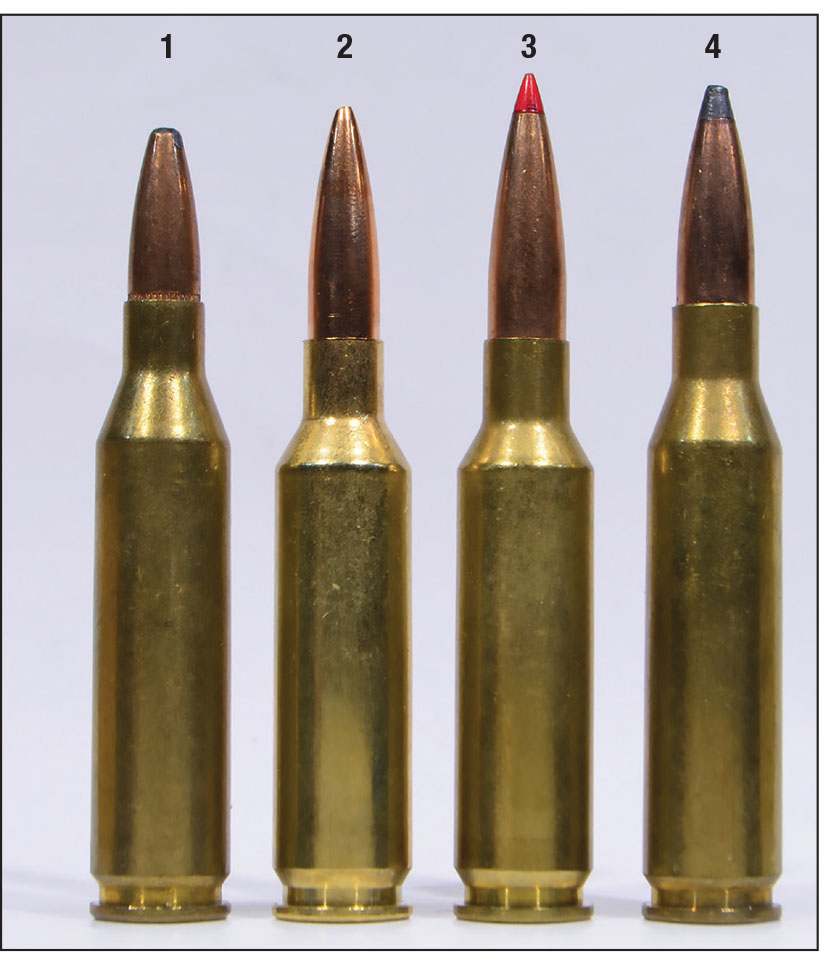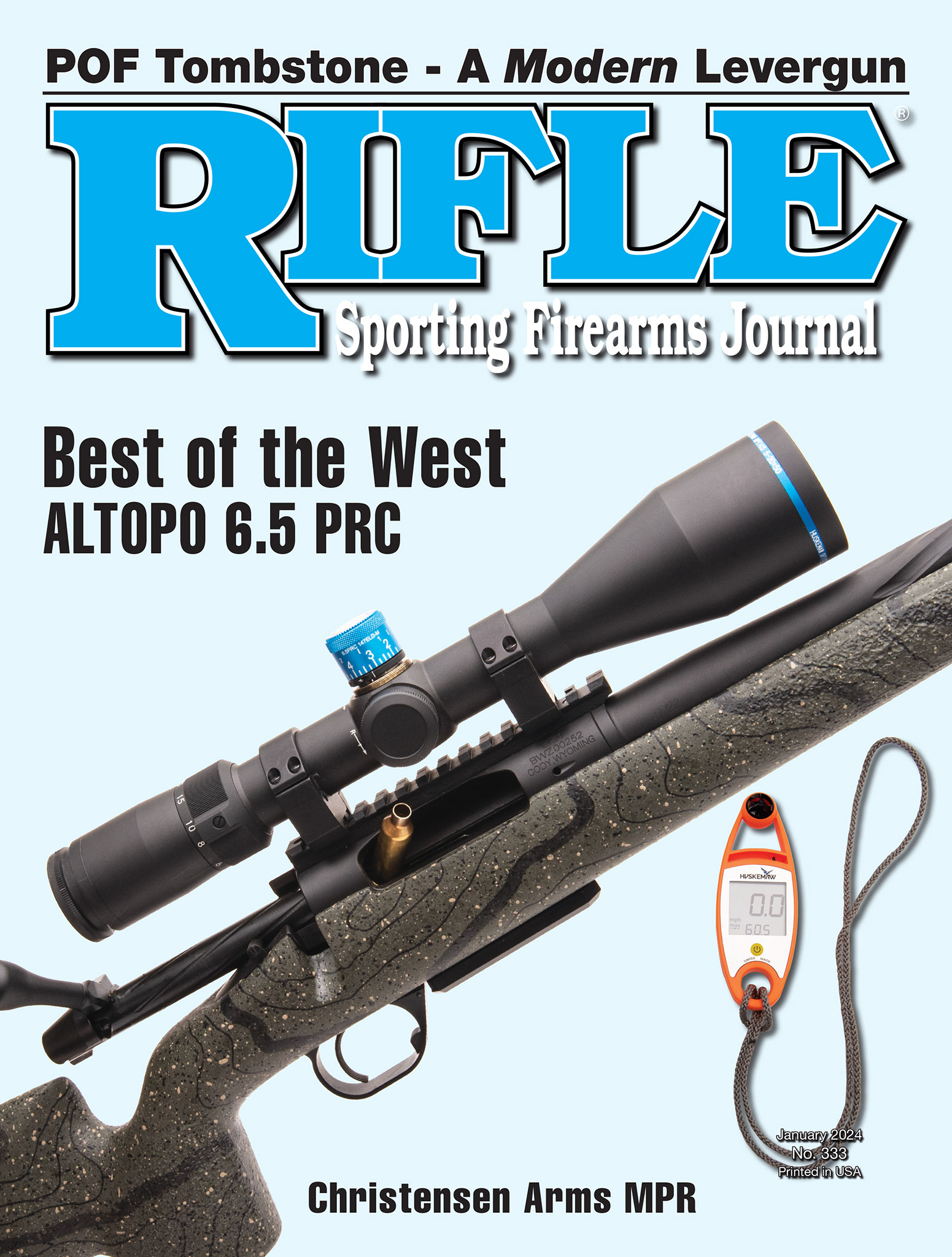Christensen Arms MPR
Extreme Versatility and Practical Accuracy
feature By: Terry Wieland | January, 24


Let’s begin with a little background. In 1989, I came into possession of a Sako Hunter-class benchrest rifle chambered in 6 PPC (Pindell-Palmisano Cartridge). It had a short and very heavy barrel attached to the cute little Sako Vixen action, with a walnut benchrest stock sporting a massive forend. It had the usual exquisite Sako trigger. I fitted it with a Leupold 36x target scope and journeyed to the range with a couple of boxes of Sako ammunition.

Based on the 220 Russian case, the 6 PPC was the first of the short, fat cases that are now ubiquitous in virtually every caliber. At the time I had mine, only Sako made ammunition and brass. On my first outing, it comfortably planted five shots into less than a half-inch, then did it again and again. Dutifully, I weighed and separated cases, worked loads up and down, tried this powder and that (H-322 was the universal choice) and succeeded in doing…what?

All of that occurred more than 30 years ago and much has happened since. Today, such accuracy is relatively common (although not as often as claimed) and both rifles and cartridges have proliferated at a mind-boggling rate. Where once the 6 PPC cartridge was very distinctive in appearance, today you couldn’t readily pick it out of a crowd of 50 lookalikes.
Although I remember that Sako fondly for its accuracy, I also remember it for its weight, clumsiness, and unsuitability for any non-target purpose. I personally place a lot of store in how comfortable a rifle is to hold and carry, how versatile and whether it can readily be adapted to a purpose for which it was not specifically designed.
That brings me to the Christensen Model 14 Modern Precision Rifle (MPR) chambered in 6mm Creedmoor.

Dimensional differences among cartridges in this class are so small they are measured in thousandths, with shoulder angles differentiated by single degrees. Their developers tout these differences as breakthroughs, but they seldom are. In a recent Cartridges of the World, the writer described the 6mm Creedmoor as a “near twin” of the 260 Remington. Since the 260 Remington is merely the 308 Winchester necked down to 6.5mm, and the 243 Winchester is also a necked down 308 Winchester, and 6mm uses bullets that measure out to .243 inches, how exactly is the 6mm Creedmoor superior to the almost 70-year-old 243?
The answer lies in fractions of an inch, and the ability to accommodate long-for-caliber bullets, seated well out, while still fitting into an AR-10 platform magazine like the 243 Winchester. Ballistically, there is very little difference. But – and it’s a big ‘but’– when you’re trying to knock down targets at 500 yards or more, every little bit helps.
One way of summarizing it would be to describe the 6mm Creedmoor as a thoroughly updated and perfected 243 Winchester. Since the old 243 is extremely good just as is, an actual improvement is to be applauded, which is what this seems to be.
Now the rifle itself.
Christensen Arms of Utah specializes in what we older folks might call high-tech weaponry employing materials like carbon fiber, stainless steel, nitrides and so on. Roland Christensen, an aerospace engineer, began in 1993, pioneering carbon-fiber wrapped stainless steel barrels, then moving into carbon-fiber stocks. Their products include bolt actions, AR-platform rifles and 1911 pistols.

The rifle’s weight starts at 6.9 pounds, depending on caliber and so on. Mine, fitted with a Sightron 4-12x 40mm scope and carrying five rounds of ammunition, weighed 9.5 pounds. No sling, no bipod. Is that particularly light?
In 1996, I got an Ultra Light Arms rifle in 6.5x55 that weighed less than 6 pounds, and with a Leupold scope, sling, and five rounds, still came in at less than 7.5. Everything is relative, but a hunting rifle, ready to go at 9.5 pounds was not particularly light even 50 years ago. Personally, I am not a fan of unduly light rifles because, while they might be nice to carry, they are the devil to shoot well. If a rifle is so light you can’t hold it steady and hit anything, what’s the point? Then, if you have to add a bipod to do so, then you’ve negated the light weight. So the weight is not an issue – not to me, at least.
Christensen’s second major feature is compactness, and this is accomplished through the use of a folding buttstock of the type I first saw in 1965 in W.H.B. Smith’s Book of Rifles, fitted to a paratroop model FN-FAL. I’ve been a sucker for them ever since, and vastly prefer them to the usual telescoping design commonly found on ARs. They are simply more foolproof and also, generally, allow a shorter rifle when folded.
The Christensen design allows the usual adjustments to stock length, height of comb and so on, but this is done by way of solid fasteners locked in place by pairs of Allen screws. There is no instant adjustment, with push-buttons and springs. Such instant adjustments can translate into instant and accidental maladjustments, usually when you want them least. With the Christensen, you fit your stock, tighten the Allen screws firmly, and everything is locked solid, while retaining the option of folding the stock instantly if needed.
This suggests to me that the stock was formulated by guys who have really been there, not by designers dealing in theory.
We’ll come back to this, but now let’s deal with accuracy.
Like most manufacturers in its class, Christensen offers “accuracy guarantees” of one or even one-half minute of angle (MOA), depending on the model and caliber. This one is 1-MOA, which they define as three shots into less than an inch at 100 yards. There are, however, caveats.
First, they insist you break in the barrel according to their formula, which includes detailed explanations of shooting, scrubbing, shooting, and more scrubbing, until you’ve fired 50 rounds, then scrubbed it cuprous-fouling free. After that, you must use high-quality match-grade ammunition, fired under suitable conditions, not to mention the skill of the shooter.
Practically speaking, does such a guarantee mean anything? Alas, not really. With so many variables, it’s impossible to prove one way or the other. My experience with accuracy guarantees goes back to the original – Weatherby’s – in the 1970s. They guaranteed three shots in 1.5 inches using their Norma-made factory ammunition, and included a target with each rifle. By and large, I found these to be legitimate. Kenny Jarrett guaranteed .5-MOA with his custom rifles, using his own custom-loaded ammunition tailored to the rifle. From there, everyone felt they had to do it.
As the uncontrollable variables multiplied, so did the caveats, conditions, and weasel words. Now, manufacturers are trapped – damned if they don’t, double-damned if the rifle doesn’t perform.
My major problem, however, is with the three-shot limit. I don’t think three shots tells me much, and an average of three, three-shot groups, even less. If you’re going to fire nine shots, why not put them all into one group? That would tell you something worth knowing. An average of three small groups stacks the deck in favor of the rifle.

Taking Christensen at their word, I obtained a supply of Hornady Black 6mm Creedmoor ammunition loaded with 105-grain boat-tail hollowpoint (BTHP) bullets and shot some groups. I also handloaded some ammunition using Berger Match bullets, and Redding Type-S competition dies with the correct neck bushing for Hornady brass, trying three different powders. The most promising load, with IMR-8208 XBR, was then varied up and down by a half grain.
The result was a bunch of five-shot groups all measuring right around an inch – some a little more, some a little less. In two cases, I had a four-shot cluster with a flyer, and both times the first three shots went into the tiny cluster; the fourth or fifth flew a tad wild and enlarged the group. One cluster was a little under a half-inch, the other a little over.
Does that prove the rifle’s inaccurate? Not at all. Does it call my skill into question? Yeah, probably.
These loads were deliberately chosen at random, using bullets and powder I had on hand, to see what the rifle could reasonably be expected to do. I have no doubt serious load development would result in some hunting loads that would satisfy anyone. One thing I found particularly desirable was the fact that all the groups I shot went into the same spot on the target. That is the mark of a very consistent and inherently accurate rifle, never mind group size.

The Christensen trigger – critical in terms of accuracy – was beautifully crisp and consistent to within an ounce or two, at just under 3 pounds. Now, back to the folding stock, which I grow more fond of it every time I lock it in place. Folded, the rifle measured just under 36 inches stem to stern – 3 inches shorter than my Mannlicher-Schönauer Model 1903, the mountain rifle that has set the standard for 120 years, and with the added advantages of both a 24-inch barrel and a muzzle brake.
It fits beautifully into a Jagdhund backpack of the style typically carried by hunters in the Alps, safely out of the way and leaving both hands free. The pack, suitably filled out with jacket, rain gear and lunch, provides an excellent shooting rest for those who (like me) abhor bipods.
To be brutally honest, I was prepared not to like the Christensen very much. A little too tactical, a little too modernistic, a little too high tech. But then I started shooting it, and kept coming back to shooting it, and the more I shot it, the more I liked it.
Whatever its other qualities, the Christensen Model 14 MPR has the one overwhelming virtue that I prize in a rifle, and that is versatility. There is not much one could not do with this rifle, either on the range or on a mountainside, and do it extremely well.
Accurate and predictable though it be, I can’t imagine ever becoming bored with it.
.jpg)


